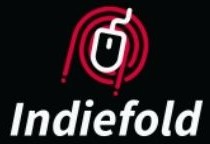Hi there! 👋
IndieFold.com is Retiring 👴

IndieFold.com is being retired (Maybe permenantly. We will see.).
I wanna thank the indie game dev community for the small but meaningful support they have given IndieFold.com. It has been awesome getting to know some of you and being able to host a ton of awesome, creative indie games on their
When I initially set out to make the platform. I intended it to be a space for indie game devs, to showcase their games so they can be discovered by players, content creators and even people looking to hire talented game developers.
The largest challenge really though as I look back was not the technical aspect nor the fact that I didn't have people on the platform. I could solve that by using better servers, optimizing the code and processes, and of course reaching out more to the community.
The largest challenge came from sustainability 💵.
I used ads on and off, but they barely covered 1% of the cost of running the site. I also started to add indie games to the platform to help them get exposure to expand the number of pages and to try to see if an ads only based approach would work before trying to bring those devs to the platform. It just was unsustainable. So I have decided to shutter it and maybe repurpose it in the future.
While this is certianly a departure from what I had planned since the beginning of 2024. As I've made good progress moving IndieBuilds along in development it just makes sense to refocus on it.
As I work on IndieBuilds, a game store for Indie Games, I've been thinking whether it makes sense to keep IndieFold up and running as the spirtual predecessor to IndieBuilds.
I haven't quite made up my mind, but I do know that having to launch and work on IndieBuilds as my sole focus from scratch will give me a new perspective and allow me to continue to work on one platform that I hope will be of substantive use to game developers.
So thanks for the support on really my first go around of a project I just hoped would help indie game developers.🙏
PS. You can still reach me on socials, Twitter, Discord, BlueSky